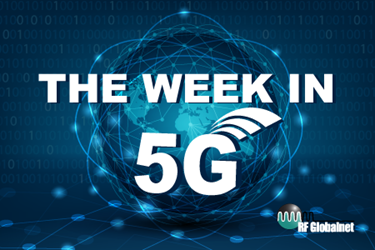The Week in 5G: 9/1/2020 — Vodafone Court Loss Endangers U.K. 5G Rollout; First Extended-Range 5G NR Data Call Over mmWave
By Ed Biller

Staying true to its prediction in July, the 5G Future Forum has released its first technical specifications, covering two areas: multi-access edge computing (MEC) “Experience Management” and “Deployment.” They can be accessed at the 5G Future Forum website.
The experience management specs define “a set of intent-based APIs for functional exposure of edge and workload discovery with potential expansion to include future MEC functions and capabilities…driven by network intelligence.” The deployment specs are intended to “enable hyperscalers and service providers to deploy and integrate global MEC physical frameworks, including facilities (e.g. power and cooling), monitoring, operational considerations, and security.”
In the United Kingdom, a courtroom loss for mobile operator Vodafone could have far-reaching implications for all 5G rollouts in the nation. Specifically, Vodafone and other operators pay landowners rents every year at thousands of sites hosting 5G masts. A judge has ruled that Vodafone “should pay rent to the landowner… based on the value to the operator as opposed to the value of the land itself, which would be much cheaper,” reports the Daily Mail’s This is Money.
It is expected that more landowners now will challenge U.K. operators for higher rents, hindering progress on 5G rollouts.
Sticking with 5G network rollouts, a new OpenSignal study indicates the United States is falling even further behind its peers, despite 5G services becoming more widely available across the nation.
Topping the download speed list are South Korea, where users experience 5.3 times faster average 5G speeds than 4G — 312.7Mbps — and Australia (215.7Mbps), followed by Taiwan (210.2Mbps), and the U.S.’ northern neighbor, Canada (178.1Mbps). “In the United States,” reports VentureBeat, citing the OpenSignal study, “the difference is a mere 1.8 times, and slow in both cases: 28.9Mbps for 4G versus 50.9Mbps for 5G.”
Remaining in the U.S., it appears the Trump administration’s on-again-off-again plan to create a “nationalized” 5G network is just as unlikely to come to fruition in 2020 as it was when the idea was first floated early in Trump’s presidency, writes Mike Dano of Light Reading.
Dano’s sources note that “Verizon, AT&T, T-Mobile and others are already pouring billions of dollars into 5G in the US,” minimizing the need for a nationalized 5G network. While the initiative remains one of 51 items on Trump’s re-election platform to-do list, analysts at New Street Research scathingly write “it appears to us that there is not an actual plan behind each bullet, other than to serve as a short-term public relations ploy. In short, this is a case where we don't think the language should be taken literally or seriously."
Meanwhile, Qualcomm, Casa Systems, and Ericsson this week announced completion of what they claim is “the world’s first extended-range 5G NR data call over mmWave.” Accomplished in Regional Victoria, Australia in June, the call spanned 3.8 km, states a Casa Systems press release, and “will enable enhanced fixed broadband services and additional opportunities to utilize 5G network infrastructure for broad coverage in urban, suburban and rural environments.”
Additionally in Qualcomm news, “Chinese sources” state the chip maker and MediaTek are preparing 5G chips for more budget-minded consumers (i.e., those not willing to shell out $1,000+ for a 5G phone), and the processors “will cost less than $20,” possible dropping the price of associated 5G phones under $200, states a report by Free News.
Finally, confused about the differences between macrocells, small cells, and femtocells? Michaela Goss of TechTarget clears up the details here.
